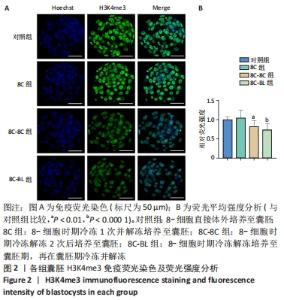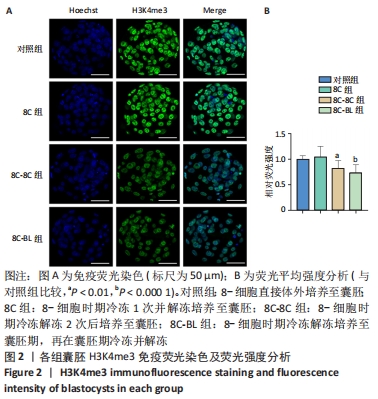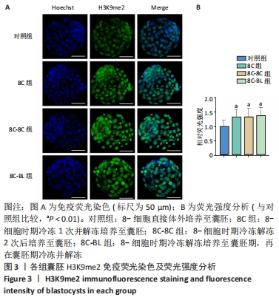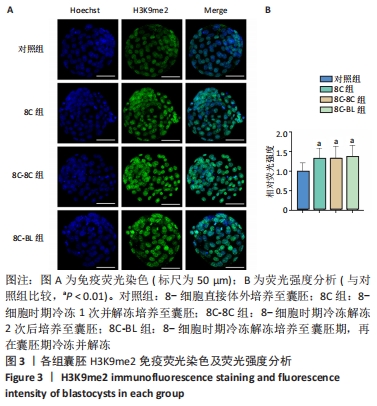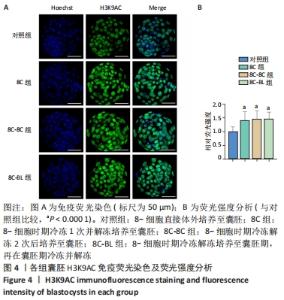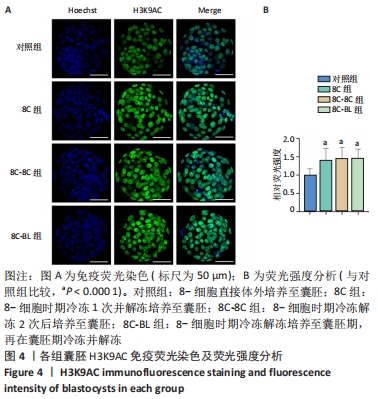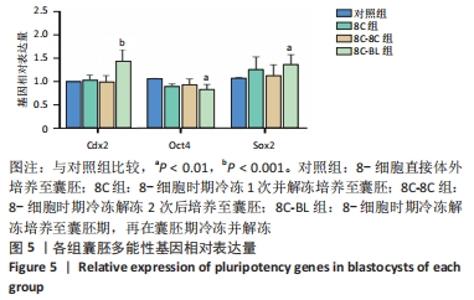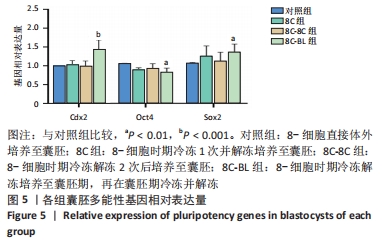[1] TROUNSON A, MOHR L. Human pregnancy following cryopreservation, thawing and transfer of an eight-cell embryo. Nature. 1983;305(5936): 707-709.
[2] MACNAMEE M, WICK K, RAINSBURY P, et al. How robust are early human embryos? Lancet. 1990;336(8715):636.
[3] YOKOTA Y, YOKOTA H, YOKOTA M, et al. Birth of healthy twins from in vitro development of human refrozen embryos. Fertil Steril. 2001; 76(5):1063-1065.
[4] HIRAOKA K, HIRAOKA K, HORIUCHI T, et al. Case report: successful delivery following the transfer of a human re-vitrified day-7 spontaneously hatched blastocyst developed from vitrified cleaved embryos. J Assist Reprod Genet. 2009;26(7):405-409.
[5] TAYLOR TH, PATRICK JL, GITLIN SA, et al. Outcomes of blastocysts biopsied and vitrified once versus those cryopreserved twice for euploid blastocyst transfer. Reprod Biomed Online. 2014;29(1):59-64.
[6] LI J, XIONG S, ZHAO Y, et al. Effect of the Re-Vitrification of Embryos at Different Stages on Embryonic Developmental Potential. Front Endocrinol (Lausanne). 2021;12:653310.
[7] BEDZHOV I, GRAHAM SJ, LEUNG CY, et al. Developmental plasticity, cell fate specification and morphogenesis in the early mouse embryo. Philos Trans R Soc Lond B Biol Sci. 2014;369(1657):20130538.
[8] MURAI S, KATAGIRI Y, YAMASHITA S. Maturation-associated Dbf4 expression is essential for mouse zygotic DNA replication. Dev Growth Differ. 2014;56(9):625-639.
[9] PUSCHECK EE, AWONUGA AO, YANG Y, et al. Molecular biology of the stress response in the early embryo and its stem cells. Adv Exp Med Biol. 2015;843:77-128.
[10] MAJIDI GHARENAZ N, MOVAHEDIN M, et al. Effects of Re-Vitrification of Mouse Morula and Early Blastocyst Stages on Apoptotic Gene Expression and Developmental Potential. Cell J. 2018;19(4):614-619.
[11] EL-GAYAR M, GAULY M, HOLTZ W. In vitro and in vivo survival of mouse blastocysts after repeated vitrification with the open pulled straw (OPS) method. Cryo Letters. 2010;31(6):454-459.
[12] VITALE NJ, MYERS MW, DENNISTON RS, et al. In-vitro development of refrozen mouse embryos. Hum Reprod. 1997;12(2):310-316.
[13] NOHALEZ A, MARTINEZ CA, PARRILLA I, et al. Eventual re-vitrification or storage in liquid nitrogen vapor does not jeopardize the practical handling and transport of vitrified pig embryos. Theriogenology. 2018; 113:229-236.
[14] MAJIDI GHARENAZ N, MOVAHEDIN M, MAZAHERI Z, et al. Alternation of apoptotic and implanting genes expression of mouse embryos after re-vitrification. Int J Reprod Biomed. 2016;14(8):511-518.
[15] ZHENG X, CHEN Y, YAN J, et al. Effect of repeated cryopreservation on human embryo developmental potential. Reprod Biomed Online. 2017;35(6):627-632.
[16] MURAKAMI M, EGASHIRA A, MURAKAMI K, et al. Perinatal outcome of twice-frozen-thawed embryo transfers: a clinical follow-up study. Fertil Steril. 2011;95(8):2648-2650.
[17] RIVERA RM, ROSS JW. Epigenetics in fertilization and preimplantation embryo development. Prog Biophys Mol Biol. 2013;113(3):423-432.
[18] VASTENHOUW NL, SCHIER AF. Bivalent histone modifications in early embryogenesis. Curr Opin Cell Biol. 2012;24(3):374-386.
[19] SHA QQ, DAI XX, JIANG JC, et al. CFP1 coordinates histone H3 lysine-4 trimethylation and meiotic cell cycle progression in mouse oocytes. Nat Commun. 2018;9(1):3477.
[20] LIU X, WANG C, LIU W, et al. Distinct features of H3K4me3 and H3K27me3 chromatin domains in pre-implantation embryos. Nature. 2016;537(7621):558-562.
[21] WU Y, DONG J, FENG S, et al. Maternal UHRF1 Is Essential for Transcription Landscapes and Repression of Repetitive Elements During the Maternal-to-Zygotic Transition. Front Cell Dev Biol. 2021;8:610773.
[22] STÄUBLI A, PETERS AH. Mechanisms of maternal intergenerational epigenetic inheritance. Curr Opin Genet Dev. 2021;67:151-162.
[23] ZHAO XM, DU WH, HAO HS, et al. Effect of vitrification on promoter methylation and the expression of pluripotency and differentiation genes in mouse blastocysts. Mol Reprod Dev. 2012;79(7):445-450.
[24] BAKHTARI A, RAHMANI HR, BONAKDAR E, et al. The interfering effects of superovulation and vitrification upon some important epigenetic biomarkers in mouse blastocyst. Cryobiology. 2014;69(3):419-427.
[25] FACCIOL A, TSANG B, GERLAI R. Alcohol exposure during embryonic development: An opportunity to conduct systematic developmental time course analyses in zebrafish. Neurosci Biobehav Rev. 2019;98: 185-193.
[26] NICHOLS J, ZEVNIK B, ANASTASSIADIS K, et al. Formation of pluripotent stem cells in the mammalian embryo depends on the POU transcription factor Oct4. Cell. 1998;95(3):379-391.
[27] CHOI DH, LEE KE, PARK J, et al. Cell-Permeable Oct4 Gene Delivery Enhances Stem Cell-like Properties of Mouse Embryonic Fibroblasts. Int J Mol Sci. 2021;22(17):9357.
[28] TAKADA Y, IYYAPPAN R, SUSOR A, et al. Posttranscriptional regulation of maternal Pou5f1/Oct4 during mouse oogenesis and early embryogenesis. Histochem Cell Biol. 2020;154(6):609-620.
[29] COTICCHIO G, LAGALLA C, STURMEY R, et al. The enigmatic morula: mechanisms of development, cell fate determination, self-correction and implications for ART. Hum Reprod Update. 2019;25(4):422-438.
[30] MIHAJLOVIĆ AI, BRUCE AW. The first cell-fate decision of mouse preimplantation embryo development: integrating cell position and polarity. Open Biol. 2017;7(11):170210.
[31] NIWA H, TOYOOKA Y, SHIMOSATO D, et al. Interaction between Oct3/4 and Cdx2 determines trophectoderm differentiation. Cell. 2005;123(5): 917-929.
|
